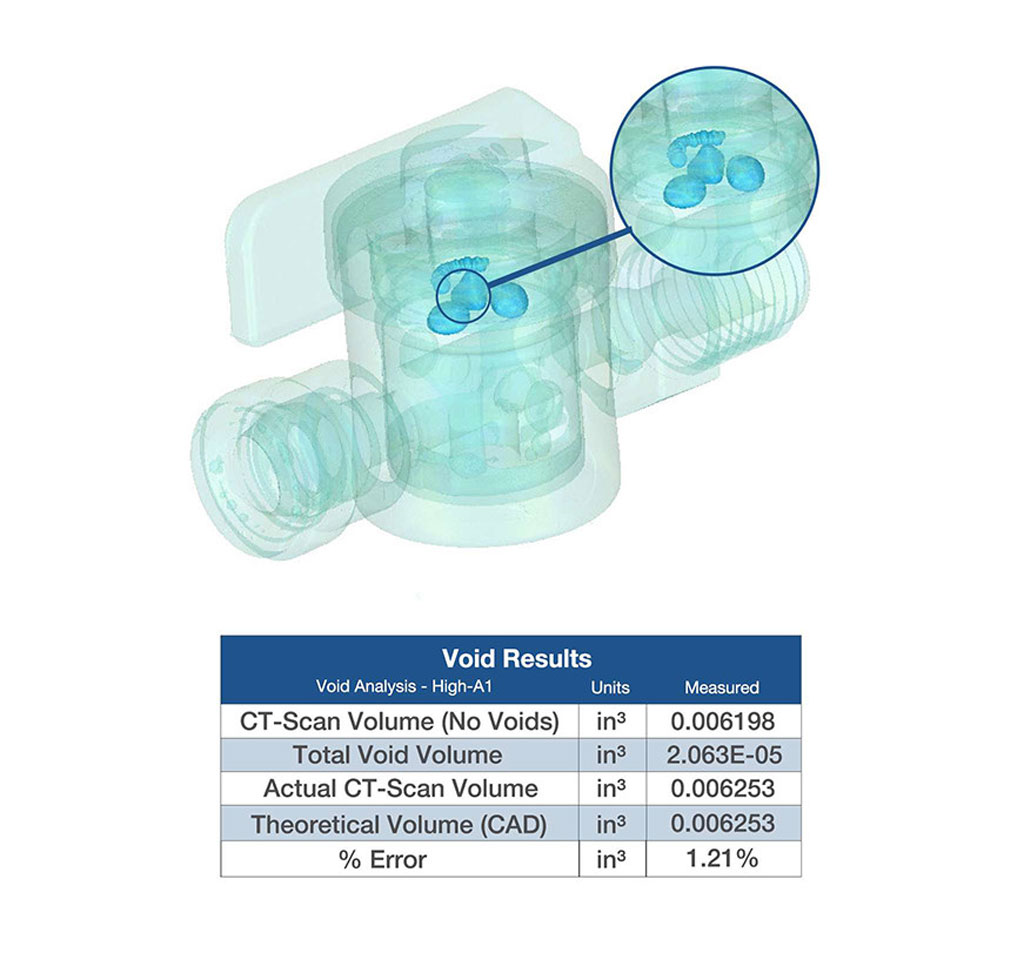A common issue with traditional probe and vision metrologies is their inability to perform internal inspection for porosity and inclusions. Kinetic Vision's 3D CT Scanning provides a fast and efficient way to conduct porosity analysis without physically disturbing the sample. Material density differences quickly highlight pores in metallic parts, gas traps and voids in plastic parts, and fiber delamination or voids in composite materials. The results can be quantified by overall void volume, percent volume, porosity cross-sectional area, and location and volume of specific flaws using tabular results and color-coded images. Our design engineers can then characterize the void spaces and suggest ways to improve your part design or manufacturing process.
Industries including Aerospace, Automotive, and Oil and Gas regularly create complex aluminum castings of various components. Our advanced porosity analysis methods quickly identify the size and location of voids and cracks that may create structural performance and quality issues during secondary machining operations of cast parts.

Valve Porosity Study
A porosity analysis was done on mass-produced cast valve to investigate potential quality issues. As can be seen in the video, sizable voids exist in the main housing, and although they don't impact valve performance, it indicates that a production issue exists. If the voids were only 10-20% larger leakage could occur while the valve was in the off position, resulting in a high customer dissatisfaction and product return rate.
Composition Analysis
In this example, a pint of ice cream was scanned using 3D CT Scanning as part of a composition analysis. The data were used to determine the quantity and distribution of the air voids and candy chunks within the product. This type of data can be leveraged by food and consumer packaged goods (CPG) industries to understand, optimize and improve manufacturing and packaging processes.

